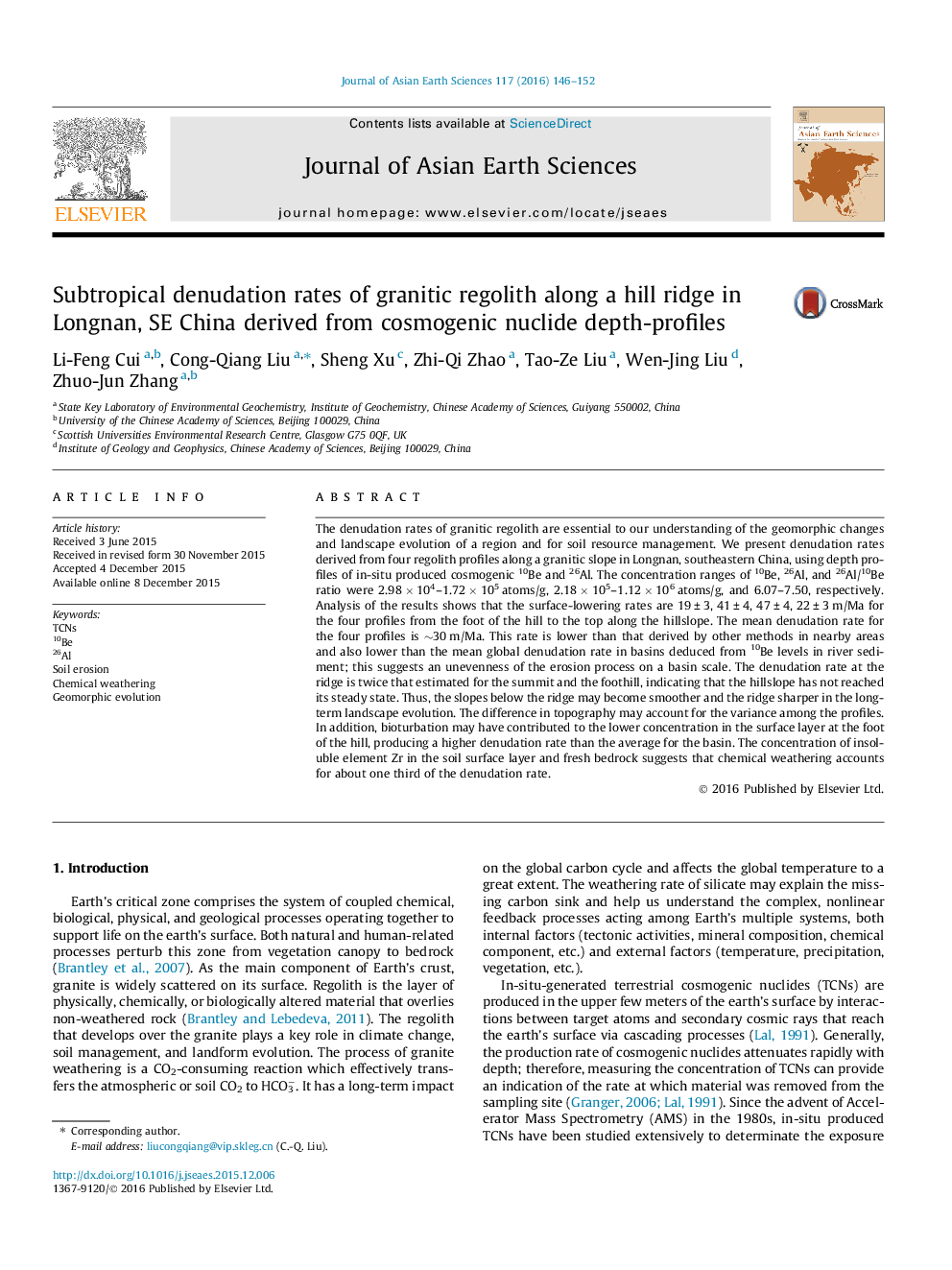| Article ID | Journal | Published Year | Pages | File Type |
|---|---|---|---|---|
| 4730181 | Journal of Asian Earth Sciences | 2016 | 7 Pages |
•The mean denudation rates of four subtropical profiles is ∼30 m/Ma.•The ridge has much higher denudation rate than summit and foothill.•Chemical weathering take account ∼1/3 of denudation rate.•The lower 10Be concentration in soil layer may generate overestimate from sediment.
The denudation rates of granitic regolith are essential to our understanding of the geomorphic changes and landscape evolution of a region and for soil resource management. We present denudation rates derived from four regolith profiles along a granitic slope in Longnan, southeastern China, using depth profiles of in-situ produced cosmogenic 10Be and 26Al. The concentration ranges of 10Be, 26Al, and 26Al/10Be ratio were 2.98 × 104–1.72 × 105 atoms/g, 2.18 × 105–1.12 × 106 atoms/g, and 6.07–7.50, respectively. Analysis of the results shows that the surface-lowering rates are 19 ± 3, 41 ± 4, 47 ± 4, 22 ± 3 m/Ma for the four profiles from the foot of the hill to the top along the hillslope. The mean denudation rate for the four profiles is ∼30 m/Ma. This rate is lower than that derived by other methods in nearby areas and also lower than the mean global denudation rate in basins deduced from 10Be levels in river sediment; this suggests an unevenness of the erosion process on a basin scale. The denudation rate at the ridge is twice that estimated for the summit and the foothill, indicating that the hillslope has not reached its steady state. Thus, the slopes below the ridge may become smoother and the ridge sharper in the long-term landscape evolution. The difference in topography may account for the variance among the profiles. In addition, bioturbation may have contributed to the lower concentration in the surface layer at the foot of the hill, producing a higher denudation rate than the average for the basin. The concentration of insoluble element Zr in the soil surface layer and fresh bedrock suggests that chemical weathering accounts for about one third of the denudation rate.
